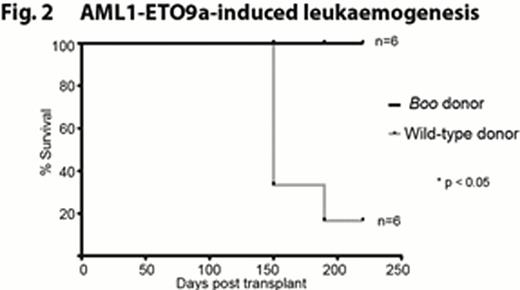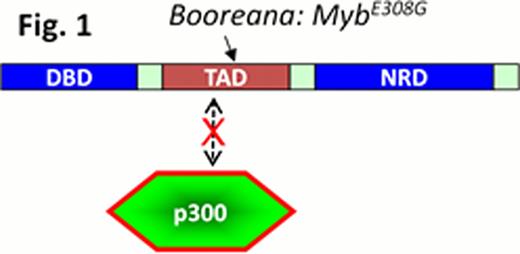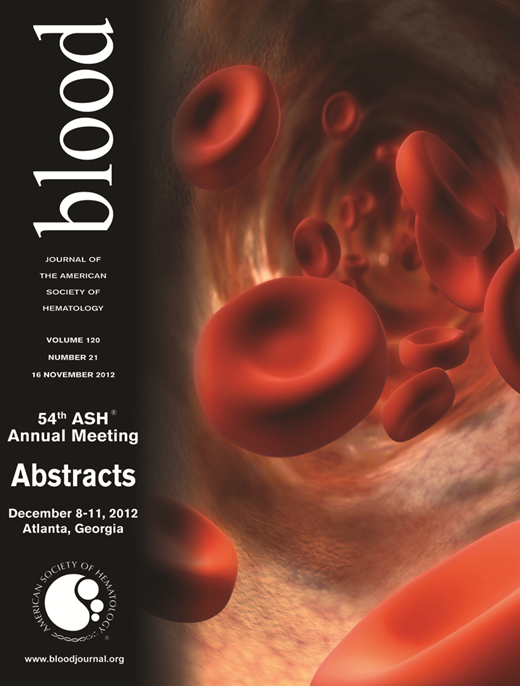Abstract
Abstract 2402
The MYB oncogene is widely expressed in acute leukaemias and is important for the continued proliferation of leukemia cells, raising the possibility that MYB may be a therapeutic target. However realization of this potential requires (i) a significant therapeutic window for MYB inhibition, given its essential role in normal haemopoiesis; and (ii) an approach for developing an effective therapeutic. We previously showed that the interaction of Myb with the coactivator CBP/p300 is essential for Myb's intrinsic transforming activity (1). Here we use haemopoietic cells from the Booreana mouse strain, which carries a mutation in Myb that prevents interaction with CBP/p300 (see Fig. 1 and ref. 2), to examine the requirement for this interaction in myeloid transformation and leukaemogenesis. Using this strain and a strain (plt6) carrying a “complementary” mutation in p300 (3), we show that the Myb-p300 interaction is essential for in vitro transformation by the myeloid leukaemia oncogenes AML1-ETO, AML1-ETO9a, MLL-ENL, and MLL-AF9. We further show that unlike cells from wild-type (WT) mice, Booreana cells fail to induce leukaemia upon transplantation into irradiated recipients following transduction with an AML1-ETO9a retrovirus (Fig. 2).
These data, as well as reinforcing the notion that MYB is an essential cofactor for myeloid leukaemogenesis, highlight disruption of the Myb-p300 interaction as a potential therapeutic strategy for AML. Furthermore, our results suggest that such a strategy would have a useable therapeutic index since Booreana mice, unlike Myb null mice, are viable. We have started to explore the use of small peptides to provide proof-of-principle for this approach.
We have also begun to explore the molecular basis of the requirement for MYB, and the Myb-p300 interaction, in AML using gene expression profiling. This has highlighted several Myb target genes – identified by our previous ChIP-Seq analysis (4) - that have been previously implicated in myeloid leukaemogenesis, as being differentially expressed between WT and Booreana cells transduced with AML1-ETO9a. One striking example is the apparent Myb-p300 dependent activation of Ets2 and Gfi1, accompanied by repression of Gata2 and Gfi1b; this pattern has previously been reported in MLL-AF9 and MOZ-TIF-induced murine AML (5).
No relevant conflicts of interest to declare.
References
Author notes
Asterisk with author names denotes non-ASH members.



